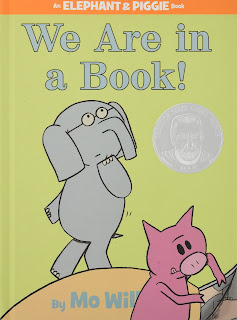Original Post Date: 2.23.2022
Credit To: (therealdealofparenting) https://therealdealofparenting.com/7-books-for-your-early-reader/
It can be tempting to want to replace all your child’s toddler books with chapter books once he becomes an early reader. Please don’t. Those familiar stories are still a great way to read with your child as he develops the vast array of skills necessary to become a fluent reader.
It also can be tempting to expect your early reader to know how to read every book you share with him, but reading is actually a series of steps which build upon each other. Your child needs to know his alphabet, learn how to connect sounds to letters (phonemic awareness), and have a solid understanding of phonics before learning to decode CVC (consonant, vowel, consonant) words, recognize sight words, and learn rules such as short vowels versus long vowels.
The good news is your child doesn’t have to learn it all at once. There’s also a lot of fun to be had while your child masters all he needs to know to become a fluent reader who comprehends what he has read. In fact, keeping the fun in reading is the best gift you can give your child.
There are seven books you need to include on your bookshelf to ensure your child has fun while finding success as an early reader.
1. Wordless books such as A Boy, A Dog, and A Frog by Mercer Mayer are important for your early reader.
When you share a wordless book with your child, have him look at the pictures as he tells you the story. This encourages the important skills of predicting and making inferences. It also encourages your child to use his imagination.
These mini-books are a just-right fit for your child’s hands, and the short text and simple pictures won’t be overwhelming for your young reader. Whether your child is mastering the alphabet or practicing CVC words, these books are a great choice for your child’s bookshelf.
3. Dr. Seuss books such as The Cat in the Hat are a delightful read for all ages, but beginning readers especially enjoy them.
The simple text coupled with engaging illustrations are sure to captivate your child as he first listens to you read and later learns to decode the words for himself.
4. Mo Willems books, such as We Are in a Book! featuring Elephant and Piggie, are perfect for introducing the adventures of characters and how their interactions affect the outcome of the story.
These simple stories will make your child laugh as he follows these characters through the beginning, middle, and end of their easy-to-understand plots.
5. Splat the Cat by Rob Scotton and other “I Can Read” books provide your child with a character he will enjoy getting to know.
With several selections to choose from, your child will want to read them all. The text is designed with the beginning reader in mind, allowing him to use his decoding skills as well as practice the sight words he has learned.
6. National Geographic Readers: Weather, and the other Level One books in this series, are a wonderful way to introduce nonfiction to your young reader.
Children are naturally curious and nonfiction books not only teach your child about the world around him, but they also are a good way to introduce new vocabulary.
7. A great way to introduce chapter books to this age group is the Mercy Watson series by Kate DiCamillo.
These books, including Mercy Watson to the Rescue, have very short chapters with delightful illustrations. Each chapter ends with just enough of a cliffhanger to make your child want to read more without leaving him frustrated.
As you think about which books to buy your child, don’t forget the importance of audiobooks. You can play these while driving in the car or hanging around the house. Listening to these with your child will allow for the opportunity to engage in conversations about the stories which is an important component of critical thinking and comprehension. Listening will also aid your child with his own fluency as a reader.
No matter how many books your child can read on his own, it’s important to still read to your child. Not only will this give you the opportunity to model successful reading, but this time together is priceless as you are making memories you both will cherish.
To learn more about North Carolina author Sandy Brannan, visit










No comments:
Post a Comment